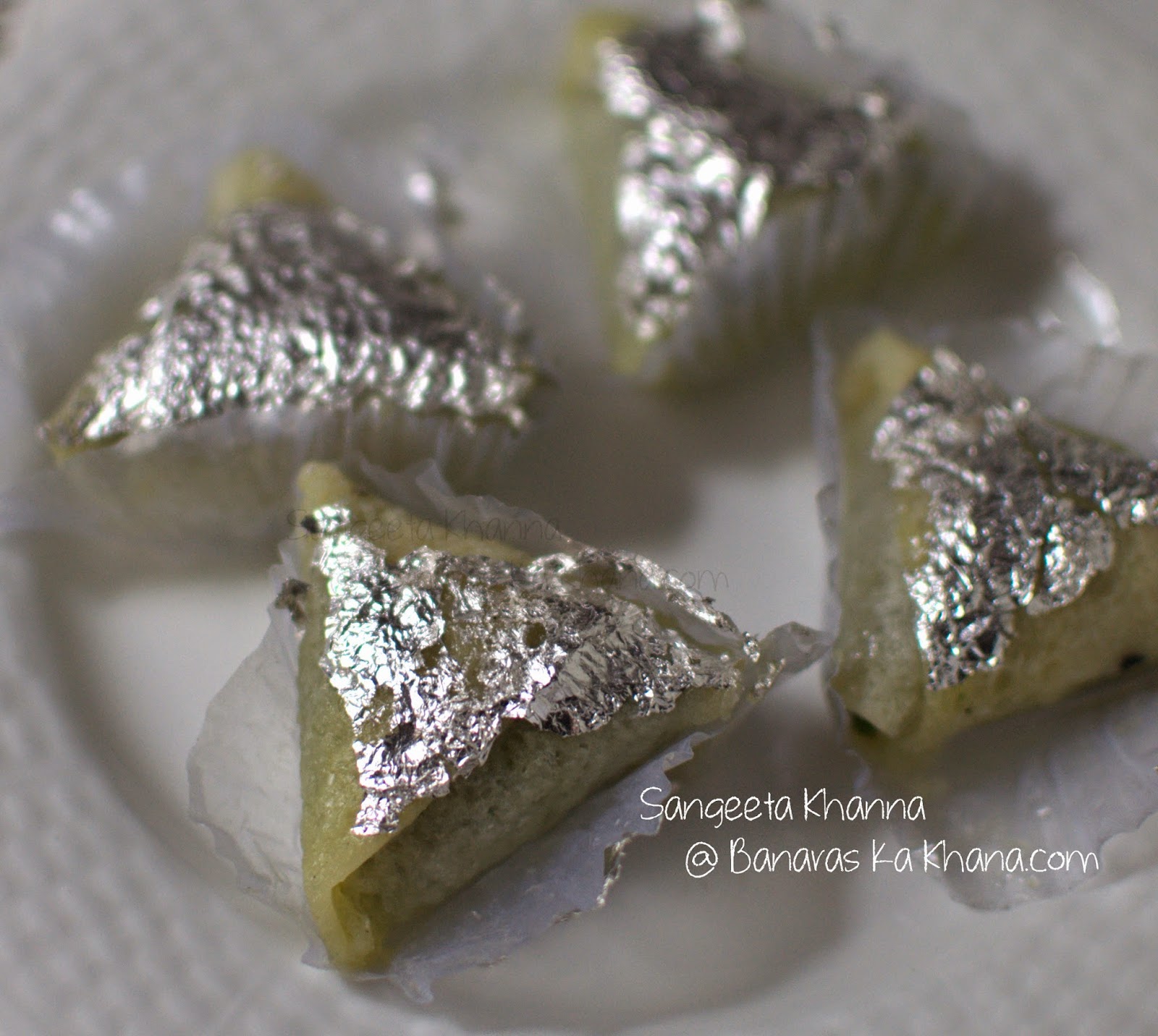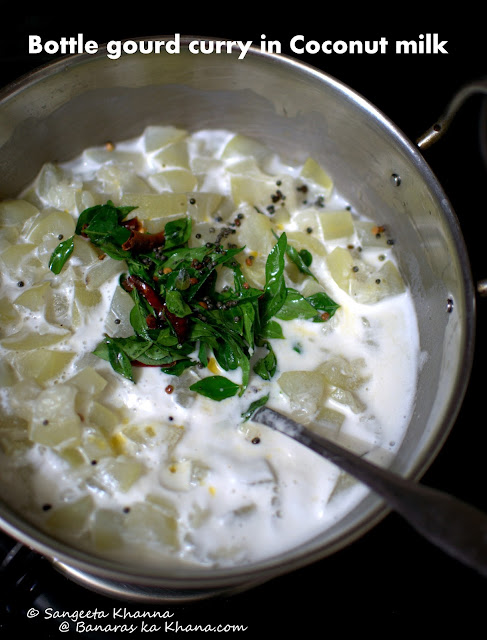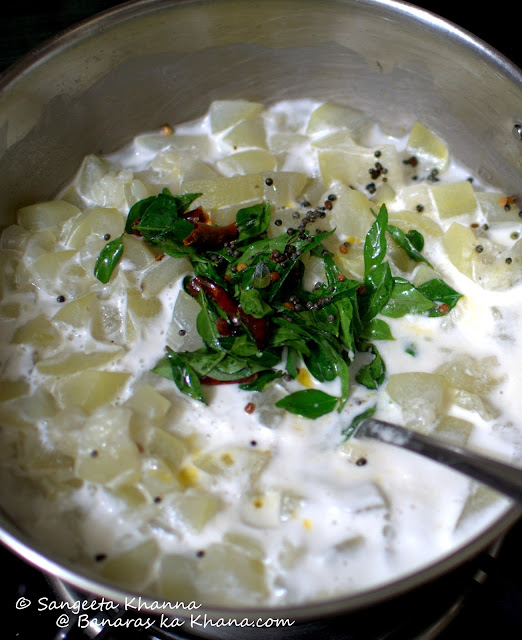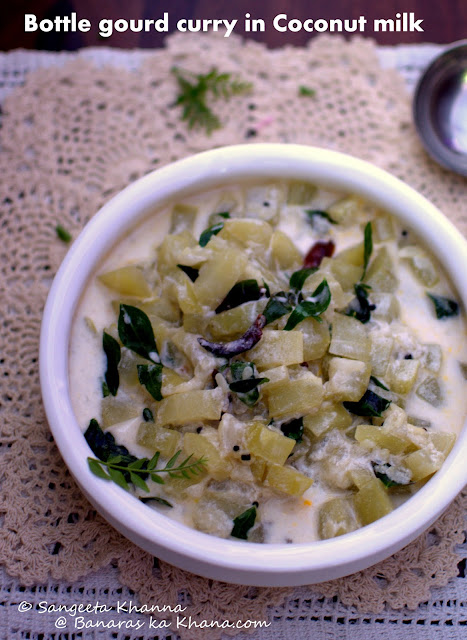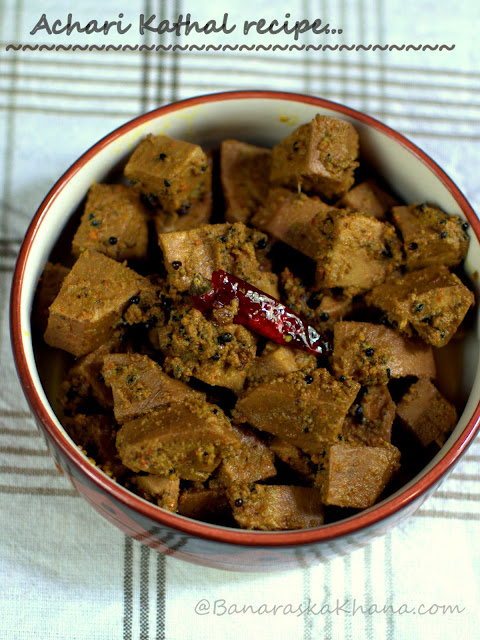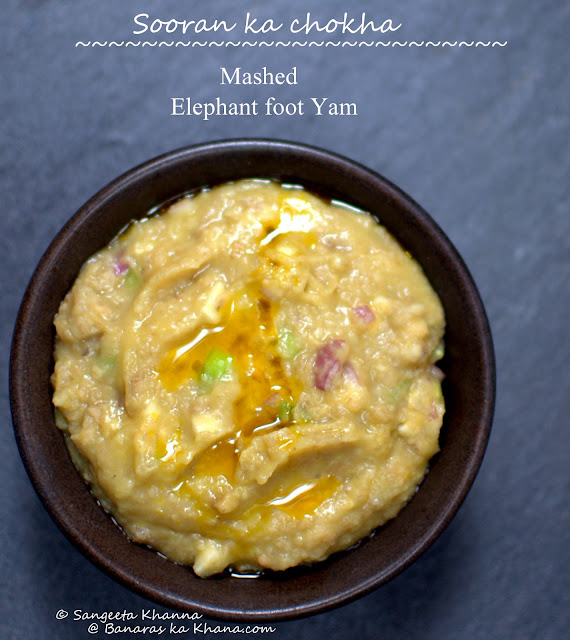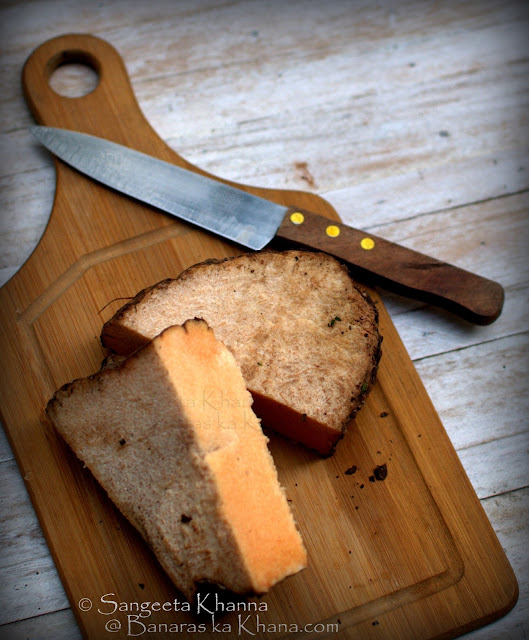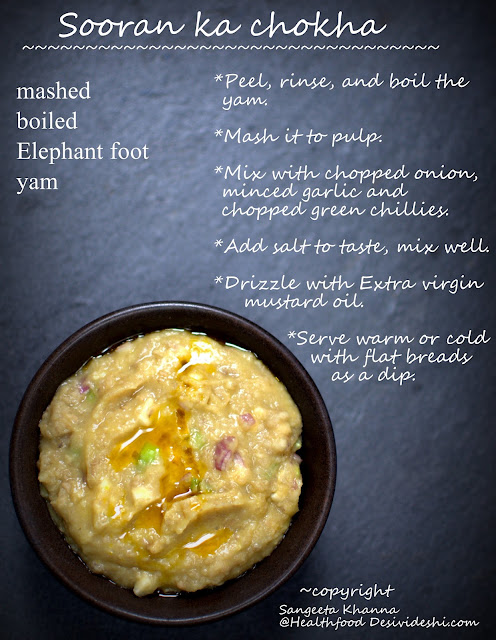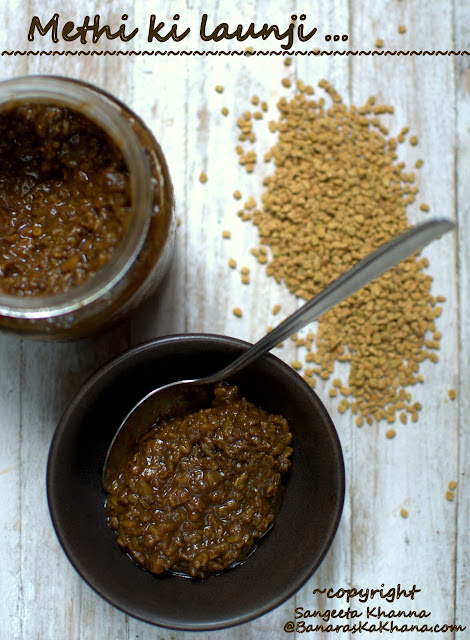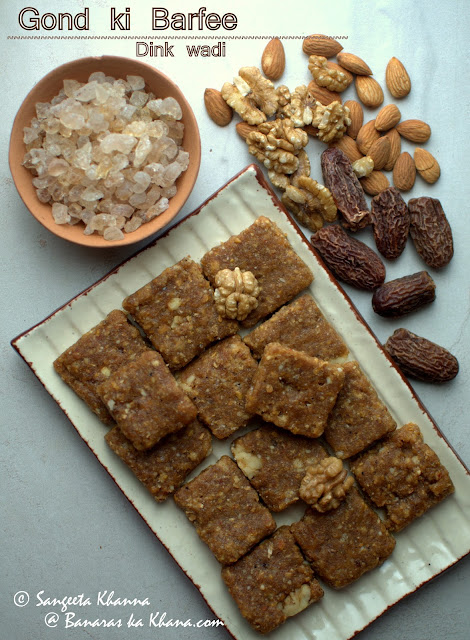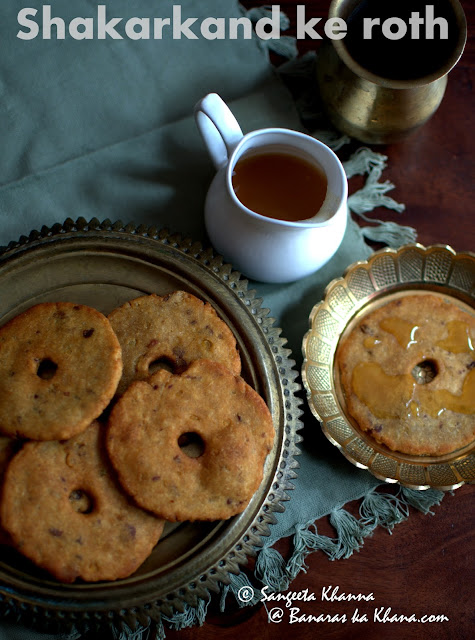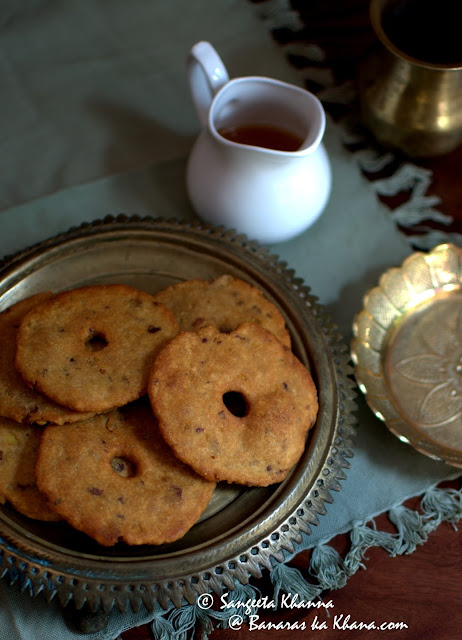Sepu wadi is a rustic yet aromatic recipe from Himachal Pradesh, cooked mostly for wedding feasts as it is supposed to have been a recipe from the royal kitchens of Himachal Pradesh. The recipe of Sepu wadi was closely guarded by the royal cooks as I have heard some Himachali folks say but now that this wadi is available in the market even in dry form, it proves how popular it has become with everyone in the region, and with those who get to taste it. Count me in.
I used to cook sepu wadi after I had seen the recipe on one of the TV shows I used to follow long long time ago. And then I lost the recipe and used to crave for the same taste. Then I saw dry sepu wadis at Himachal stalls at trade fair and wondered if those are the same as in the TV show the wadi was made fresh.
I was puzzled about this dual identity of sepu wadi for a long time until I saw it again when it was being cooked at the home stay (Raju's Cottage) at Goshaini. Lata ji, the lady of the house cooks all meals for the guests and is a great cook. I had requested her to cook some of these Himachali dishes and she obliged. That's when I saw her soaking dry sepu wadis to cook them with spinach. The wadis are deep fried and sold in markets for convenience. A genius enterprise of the local cottage industry I must say. I had only seen dehydrated Amritsari wadis or wadis from other regions of India but deep fried sepu wadis are a step ahead regarding convenience of desi foods.
This is what I saw at Raju's cottage.
I loved the wadis cooked in spiced spinach puree and took the recipe too. Thankfully there is loads of spinach growing in the garden and needs to be used a lot.
I prefer freshly made sepu wadi as I find the texture better suited for my taste. Of course I wouldn't trust the quality of oil they use to deep fry the ready to use sepu wadis. So I make my own fresh sepu wadis. Once you have planed your work well and work on it rightly, this recipe wouldn't be so time consuming as it looks.
Recipe of sepu wadi..
ingredients for the wadis...
urad daal (skinned black lentils) 1 cup to be soaked overnight
(this makes a lot of vadis for about 6-8 servings, the leftovers can be frozen for later use)
cumin seeds 2 tsp
peppercorns 2 tsp
ginger grated 1 tbsp
dry red chillies 3-4
mustard oil to deep fry the wadis
ingredients for the spinach gravy (2-4 servings)
spinach cleaned, chopped roughly and steamed 2 cups packed
yogurt 1 cup
mustard oil 2 tsp
cloves 4-5
black cardamoms 2
cumin seeds 1/2 tsp
coriander seeds 1 tsp
asafoetida (hing) a pinch
fennel powder 2 tsp
turmeric powder 1 tsp
chilli powder 1/4 tsp or more to taste
dry ginger powder 1/4 tsp
salt to taste
Procedure..
To make the wadis, you can divide the work into 2-3 days. Soak the lentils overnight and grind with the cumin, peppercorns, ginger and dry chillies without adding any water to it. Blend well so the paste gets fluffy. The paste can be left to ferment for a few hours or you can go ahead and make the wadis right away.
The wadis can be made the next day and even after making them they can be refrigerated and used whenever required.
To make the wadis, boil about 2 liters of water in a deep vessel with a little salt. Make smooth balls the size of ping pong balls from the lentil paste and drop them in the boiling water. Let them all boil for about half an hour. Fish them out and let them cool down.
Once cooled, cut them into bite sized pieces and deep fry in hot mustard oil. These deep fried wadis can be refrigerated for a week or frozen for a few months to be used when required.
To make the spinach gravy, blend the spinach along with yogurt and salt and keep aside.
Mix the powder spices with a little water to make a paste and keep aside.
Heat the mustard oil and tip in the whole spices. Let them splutter and get aromatic before pouring in the powdered spices soaked in water. Mix well and let them fry till a bit fragrant.
Pour the spinach yogurt mix, add sufficient water to make the gravy of desired consistency, keeping in mind that the wadis will soak up a lot of water. You can also add water as the curry cooks.
Let the green gravy come to a boil. Add required number of wadis, 4-5 wadis per head should be enough but go by your choice. It will be good to chop the fried wadis further if they are too big or too hard.
Simmer the curry till the wadis soak up the juices and become bigger and spongier. Adjust seasoning and serve hot with plain boiled rice or rotis of your choice.
We loved it with makki ki roti more than rice.
Note how this curry looks almost devoid of any oil in it. Not that it is a low fat recipe but there is not much oil even if the wadis are deep fried. The reason is that the the urad daal wadis don't soak much oil while deep frying and if we use less oil for the gravy, the overall fat percentage will not be too much. Although you can always use more oil for taste and convenience of cooking.
This sepu wadi curry is so flavourful you wont feel like having any other side dish with it. Just a few raw slices of tomatoes and onions will be great, just like the frugal desi meals we love so much.
The flavours of fennel, cloves and black cardamom is so potent in this curry and the tartness of yogurt just balances everything nicely. I like this curry slightly hot with a god chili kick but you can always tone down the heat to your preference.
Apart from the taste and texture of the wadis in this curry, I love the spinach gravy a lot. And since I have loads of spinach in the garden right now, I have been making this same gravy with boiled rajma (kidney beans) as well.
For the same amount of spinach gravy I add a cup of boiled kidney beans and simmer till fragrant. This becomes a filling meal with just a spoon of rice in it. I don't want to dilute the flavours I like it so much.
Cook the spinach curry sometime even if you don't have the patience to boil and deep fry the sepu wadis. You can use chickpeas or mixed lentils for this curry and see how much you like it. This will give you an idea of what flavours sepu wadi packs in.
These are some of the desi flavours that I love and you would be glad to know how healthy these meals are. Out traditional food is mostly gluten free and uses the seasonal produce so efficiently and optimally.
I always feel we don't need to use any produce being transported from faraway places or out of season as we can cook so much variety or flavours with just the few produce we get in every season in every place. I have experimented enough to conclude this.
Sepu wadi will remain a favourite for several reasons. Thanks to Lata ji at Raju's cottage, Goshaini for reviving sepu wadi in my kitchen.










































